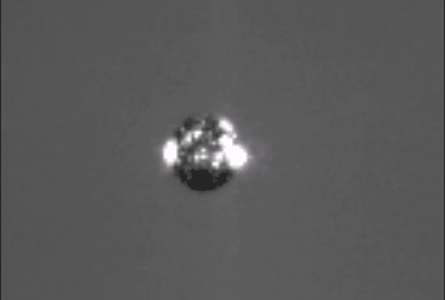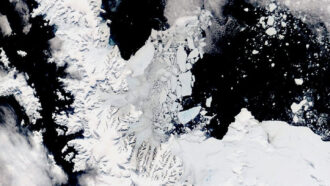(for more about Power Words, click here)
atmosphere The envelope of gases surrounding Earth or another planet.
cirrus Thin, wispy clouds that usually form at elevations of 5,500 meters (18,000 feet) or more above Earth’s surface.
climate The weather conditions prevailing in an area in general or over a long period.
crystal (adj. crystalline) A solid consisting of a symmetrical, ordered, three-dimensional arrangement of atoms or molecules. It’s the organized structure taken by most minerals. Apatite, for example, forms six-sided crystals. The mineral crystals that make up rock are usually too small to be seen with the unaided eye.
fossil fuel Any fuel — such as coal, petroleum (crude oil) or natural gas — that has developed in the Earth over millions of years from the decayed remains of bacteria, plants or animals.
global warming The gradual increase in the overall temperature of Earth’s atmosphere due to the greenhouse effect. This effect is caused by increased levels of carbon dioxide, chlorofluorocarbons and other gases in the air, many of them released by human activity.
greenhouse gas A gas that contributes to the greenhouse effect by absorbing heat. Carbon dioxide is one example of a greenhouse gas.
laser A device that generates an intense beam of coherent light of a single color. Lasers are used in drilling and cutting, alignment and guidance, in data storage and in surgery.
particle A minute amount of something.
physics The scientific study of the nature and properties of matter and energy. Classical physics is an explanation of the nature and properties of matter and energy that relies on descriptions such as Newton’s laws of motion. Quantum physics, a field of study which emerged later, is a more accurate way of explaining the motions and behavior of matter. A scientist who works in that field is known as a physicist.
plasma (in chemistry and physics) A gaseous state of matter in which electrons separate from the atom. A plasma includes both positively and negatively charged particles.
shock waves Tiny regions in a gas or fluid where properties of the host material change dramatically owing to the passage of some object (which could be a plane in air or merely bubbles in water). Across a shock wave, a region’s pressure, temperature and density spike briefly, and almost instantaneously.
technology The application of scientific knowledge for practical purposes, especially in industry — or the devices, processes and systems that result from those efforts.









